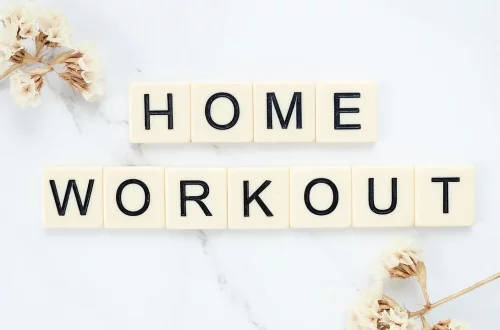
Understanding Gluteal Strain: Causes, Symptoms, and Recovery Tips
Gluteal strain is a common yet often misunderstood injury that can affect individuals of all fitness levels. It typically occurs when the muscles in the gluteal region, which are essential for various movements such as walking, running, and climbing, become overstretched or torn. The glutes play a crucial role in maintaining stability and power during physical activities, making them susceptible to strain, especially in athletes or those engaging in high-impact exercises.
Understanding the mechanics of gluteal strain can be beneficial for prevention and recovery. Many individuals may not realize they are at risk until they experience discomfort or pain during routine movements. Factors such as improper warm-up, sudden increases in activity level, or even poor posture can contribute to a gluteal strain. Recognizing the signs and symptoms early on can help individuals seek appropriate treatment and avoid further injury.
This article aims to shed light on the various aspects of gluteal strain, including its causes, symptoms, and effective recovery strategies. By gaining a better understanding of this common condition, individuals can take proactive measures to protect their gluteal muscles and maintain an active lifestyle.
Common Causes of Gluteal Strain
Gluteal strain can arise from a variety of factors, each contributing to the overstretching or tearing of the muscle fibers in the gluteal region. One of the most common causes is improper warm-up before engaging in physical activities. The glute muscles, like any other muscle group, require adequate preparation to handle the stresses of exercise. If these muscles are not properly warmed up, they are more susceptible to injury.
Another prevalent cause of gluteal strain is overexertion. This often occurs when individuals push themselves too hard during workouts, especially after a period of inactivity. For instance, someone who has been sedentary may suddenly decide to run a long distance or lift heavy weights, putting excessive strain on the glutes. Gradually increasing the intensity and duration of workouts can help mitigate this risk.
Poor biomechanics during exercises can also lead to gluteal strain. If an individual has improper form while squatting, running, or performing other movements, it can place undue stress on the glutes. Ensuring that exercises are performed with correct posture and technique is vital in preventing strain. Additionally, muscle imbalances can contribute to improper movement patterns, further increasing the risk of injury.
In some cases, underlying conditions such as hip dysplasia or arthritis can predispose individuals to gluteal strain. These conditions may affect the joint mechanics and lead to compensatory movement patterns that strain the glutes. Therefore, it’s crucial to address any pre-existing issues with a healthcare professional to minimize the risk of injury.
Recognizing the Symptoms
Identifying the symptoms of gluteal strain is essential for timely intervention and recovery. The most common symptom is pain in the gluteal region, which can vary in intensity from mild discomfort to severe pain. This pain may be localized to one side or spread across both glutes, depending on the severity of the strain.
Another symptom to watch for is swelling or bruising in the affected area. This often indicates a more significant injury and may require immediate attention. Additionally, individuals may experience stiffness or a reduced range of motion in the hip joint, making it difficult to perform activities such as walking, sitting, or climbing stairs.
Pain may also radiate down the leg, mimicking sciatic nerve pain. This can lead to confusion, as individuals may mistakenly believe they have a different injury. It’s important to pay attention to the symptom patterns and consult with a healthcare provider if pain persists or worsens.
In some cases, individuals may also experience weakness in the gluteal muscles, making it challenging to perform exercises that require hip extension or abduction. This weakness can affect overall mobility and stability, leading to further complications if not addressed promptly.
Recognizing these symptoms early can be the key to effective recovery. Ignoring the signs of gluteal strain can lead to chronic pain or re-injury, prolonging the healing process and negatively impacting an individual’s lifestyle.
Effective Recovery Strategies
Recovering from a gluteal strain requires a comprehensive approach that promotes healing while minimizing the risk of re-injury. The first step in recovery is to rest the affected muscles. This doesn’t mean complete immobilization but rather avoiding activities that exacerbate the pain. Gentle stretching and mobility exercises can help maintain some level of flexibility without putting too much strain on the muscles.
Ice therapy is another effective recovery strategy. Applying ice to the affected area can reduce swelling and alleviate pain. It is recommended to ice the area for 15 to 20 minutes every few hours during the initial days post-injury. This can help manage inflammation and promote a quicker recovery.
Once the acute pain subsides, individuals can gradually introduce strengthening exercises. Focusing on low-impact activities that engage the glutes without risking further injury is crucial. Exercises such as glute bridges, clamshells, and hip thrusts can help rebuild strength and stability in the gluteal muscles.
Physical therapy can also play a significant role in recovery. A trained therapist can provide personalized exercises and stretches tailored to the individual’s needs, ensuring a safe return to normal activities. They can also help address any underlying biomechanical issues that may have contributed to the strain.
Additionally, incorporating proper warm-up and cool-down routines into workout sessions can prevent future strains. Dynamic stretches before exercising can prepare the glutes for action, while static stretches after workouts can help maintain flexibility.
Lastly, staying hydrated and maintaining a balanced diet rich in nutrients can support overall muscle health and recovery. Adequate protein intake is essential for repairing muscle tissues, while vitamins and minerals can aid in reducing inflammation.
Preventing Future Injuries
Preventing gluteal strain is just as important as recovery. Implementing a proactive approach can help individuals avoid this painful injury in the future. One of the most effective preventive measures is to incorporate a consistent warm-up routine before any physical activity. This should include dynamic stretches targeting the glutes, hips, and legs to prepare the muscles for exertion.
Gradual progression in exercise intensity is also crucial. Individuals should avoid jumping into high-intensity workouts too quickly, especially after periods of inactivity. Instead, they should gradually increase the duration and intensity of their workouts, allowing their muscles to adapt appropriately.
Proper biomechanics during exercises cannot be overstated. Learning the correct form for various movements can significantly reduce the risk of strain. Consider working with a fitness professional or physical therapist to ensure that exercises are performed safely and effectively.
Cross-training can also be beneficial. Engaging in a variety of physical activities can prevent overuse injuries by distributing the workload among different muscle groups. This can help keep the glutes strong and resilient without subjecting them to repetitive strain.
Finally, listening to one’s body is paramount. Individuals should pay attention to any signs of discomfort and take appropriate action, whether that means resting, modifying their workouts, or seeking professional guidance.
By understanding the causes, recognizing the symptoms, and implementing effective recovery and prevention strategies, individuals can protect their gluteal muscles and maintain an active lifestyle.
**Disclaimer:** This article is for informational purposes only and does not constitute medical advice. For any health concerns or medical issues, please consult a qualified healthcare professional.




